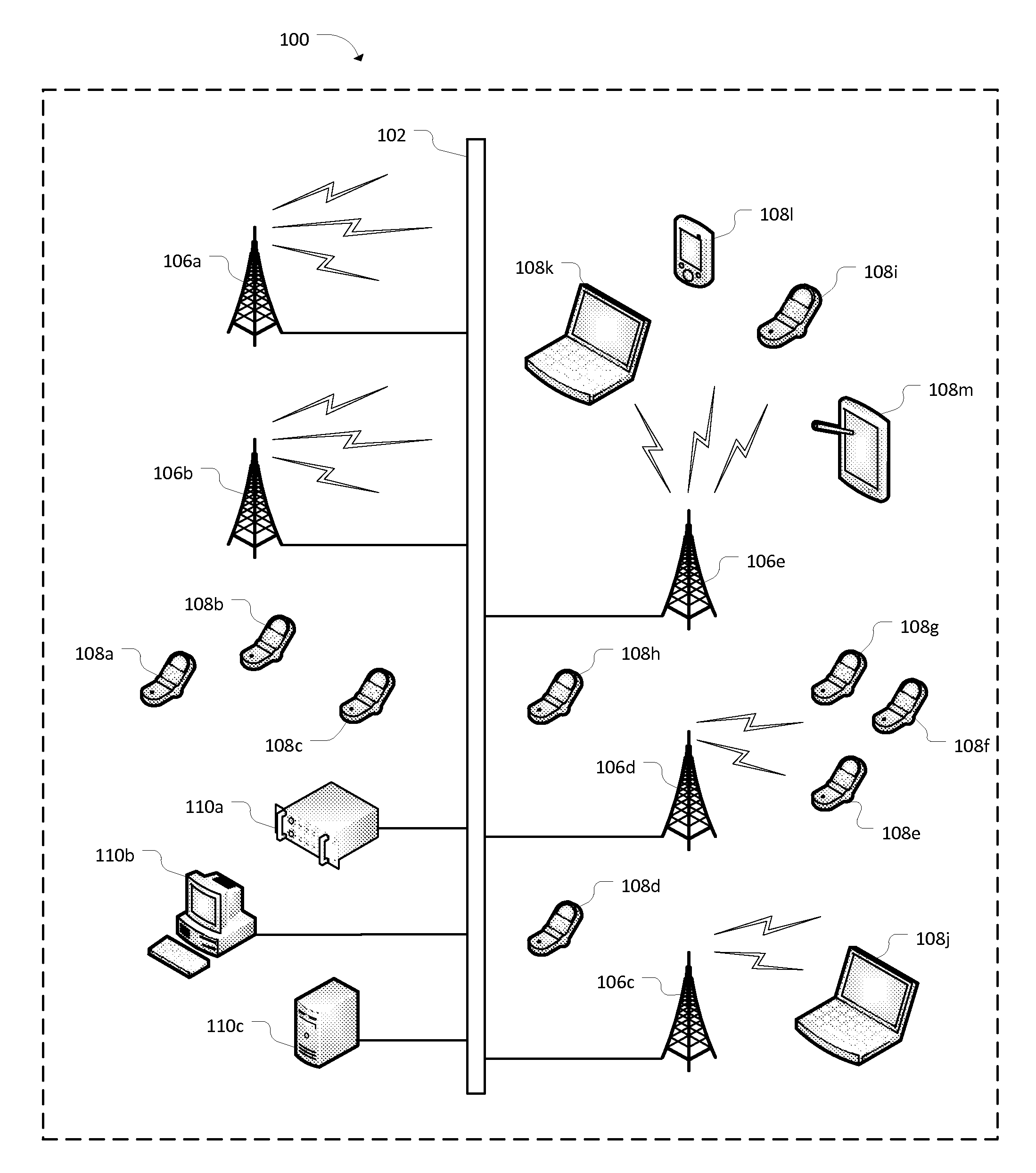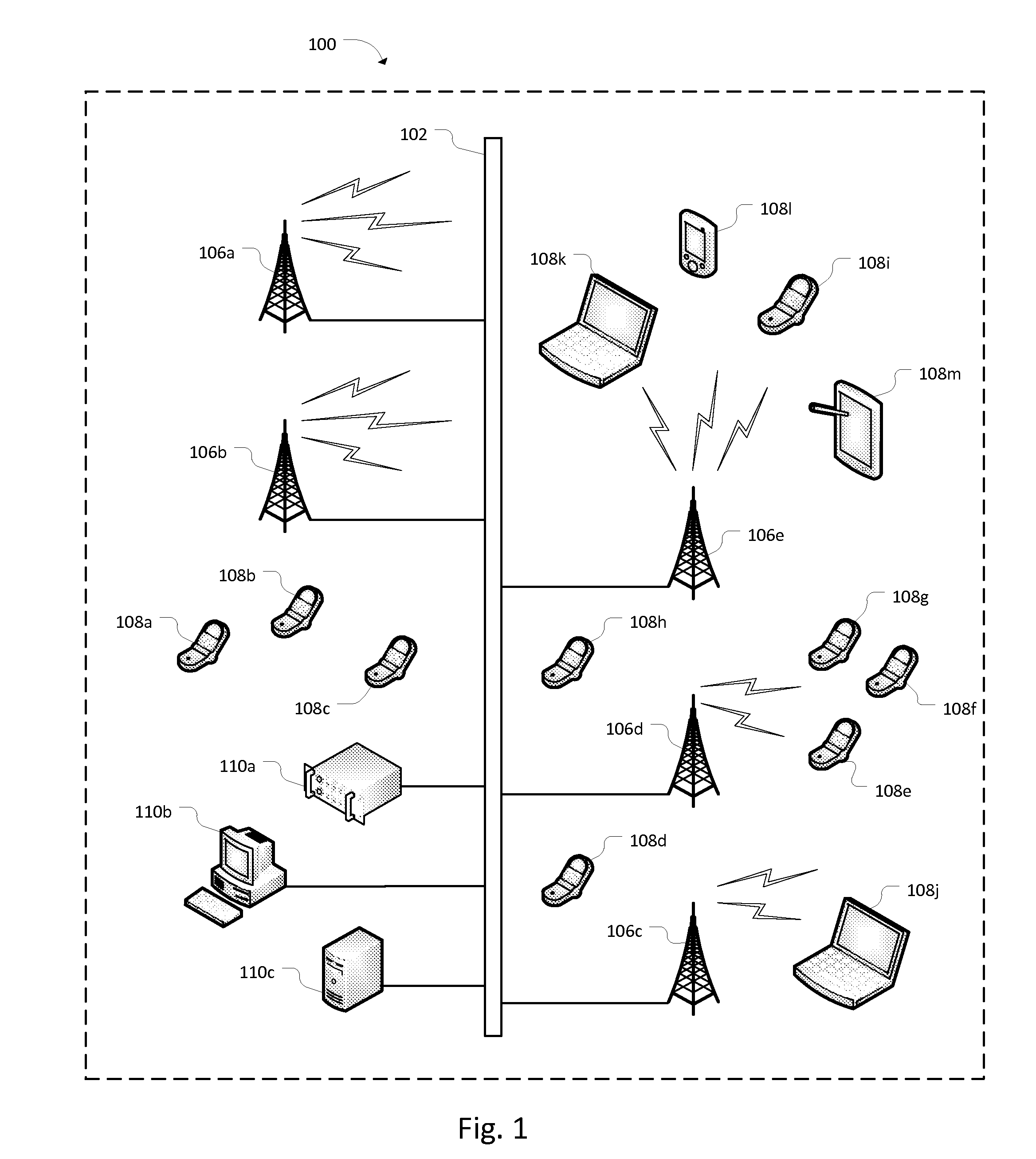Method and system for automatic neighbor relations in multi-vendor heterogeneous network
a multi-vendor heterogeneous network and neighbor relationship technology, applied in the field of method and system for automatic neighbor relationship in multi-vendor heterogeneous network, can solve problems such as priority neighboring
- Summary
- Abstract
- Description
- Claims
- Application Information
AI Technical Summary
Benefits of technology
Problems solved by technology
Method used
Image
Examples
Embodiment Construction
[0018]Embodiments of the present disclosure relate to automatic neighbor relation (ANR). The specific embodiments that are described are consistent with a Heterogeneous Network (HetNet) using the LTE standard. However, it should be understood that aspects of this disclosure apply more generally to network technologies that use identifiers for transceiver nodes.
[0019]In the following detailed description, reference is made to the accompanying drawings, which form a part of the description. The example embodiments described in the detailed description, drawings, and claims are not meant to be limiting. Other embodiments may be utilized, and other changes may be made, without departing from the spirit or scope of the subject matter presented herein. It will be understood that the aspects of the present disclosure, as generally described herein and illustrated in the drawings, may be arranged, substituted, combined, separated, and designed in a wide variety of different configurations.
[...
PUM
 Login to View More
Login to View More Abstract
Description
Claims
Application Information
 Login to View More
Login to View More - R&D
- Intellectual Property
- Life Sciences
- Materials
- Tech Scout
- Unparalleled Data Quality
- Higher Quality Content
- 60% Fewer Hallucinations
Browse by: Latest US Patents, China's latest patents, Technical Efficacy Thesaurus, Application Domain, Technology Topic, Popular Technical Reports.
© 2025 PatSnap. All rights reserved.Legal|Privacy policy|Modern Slavery Act Transparency Statement|Sitemap|About US| Contact US: help@patsnap.com



